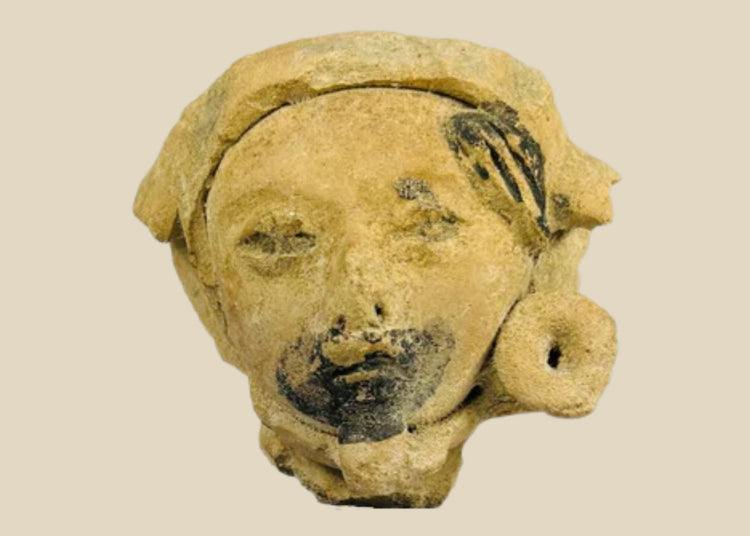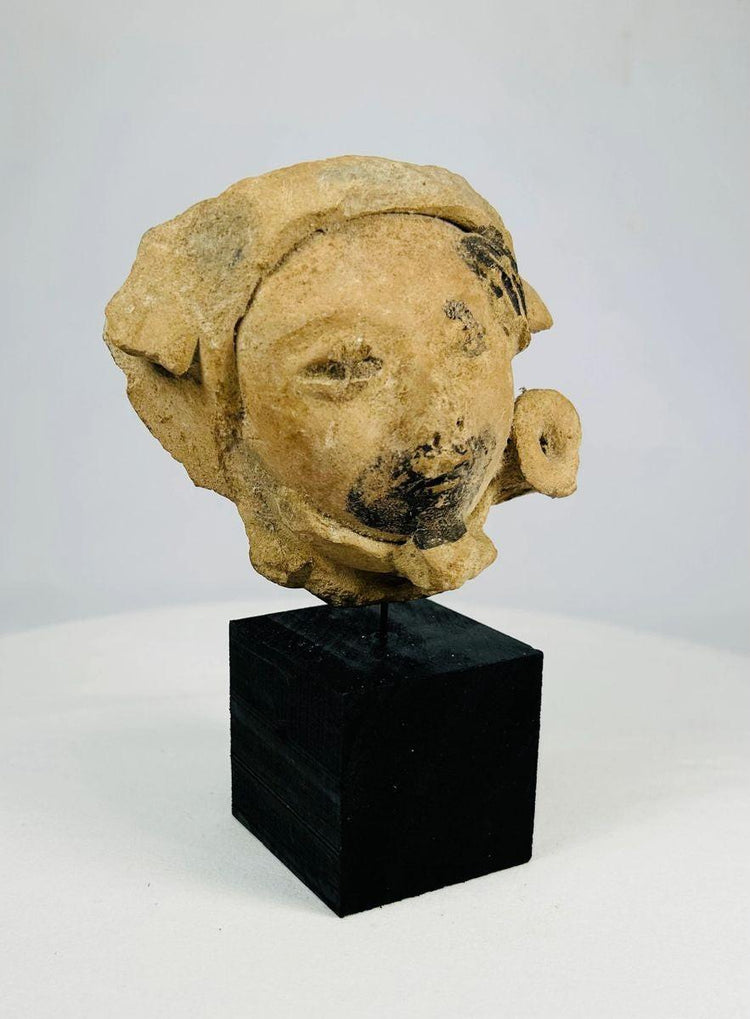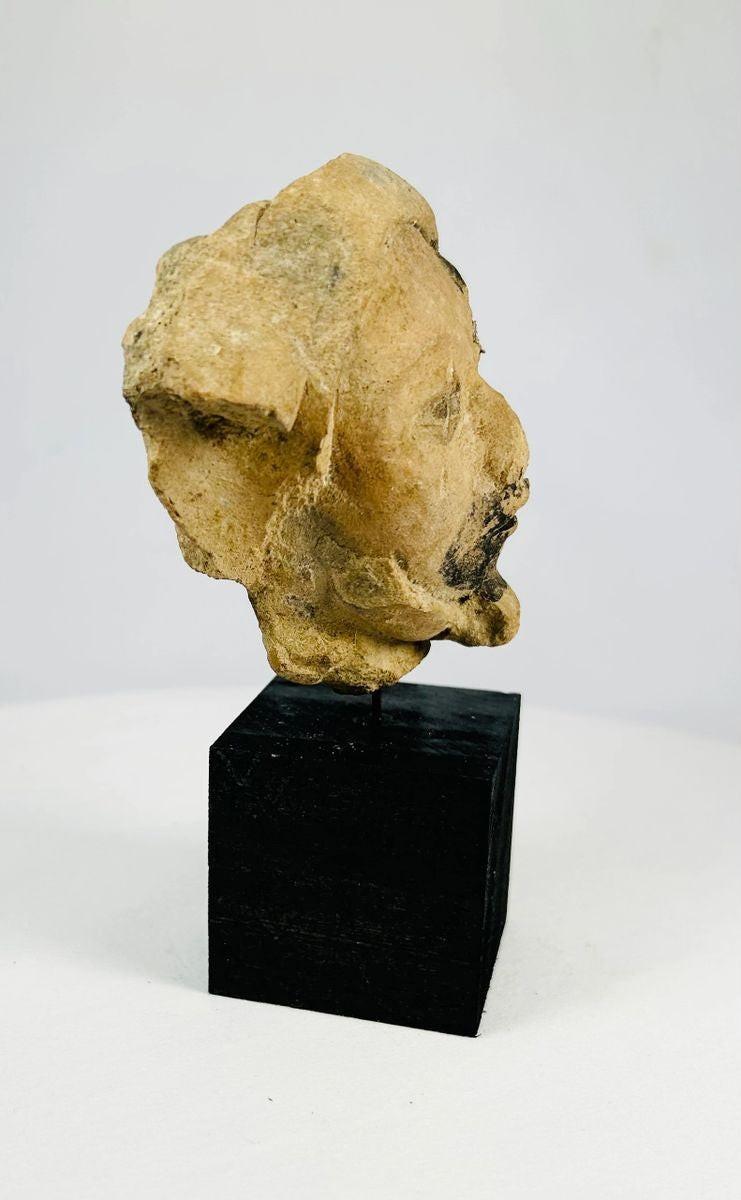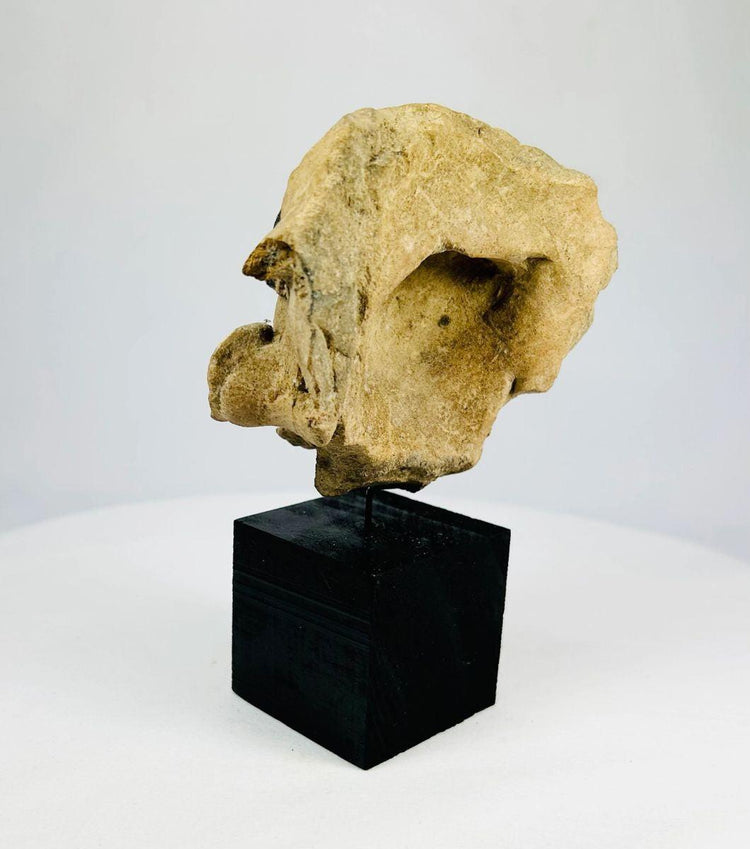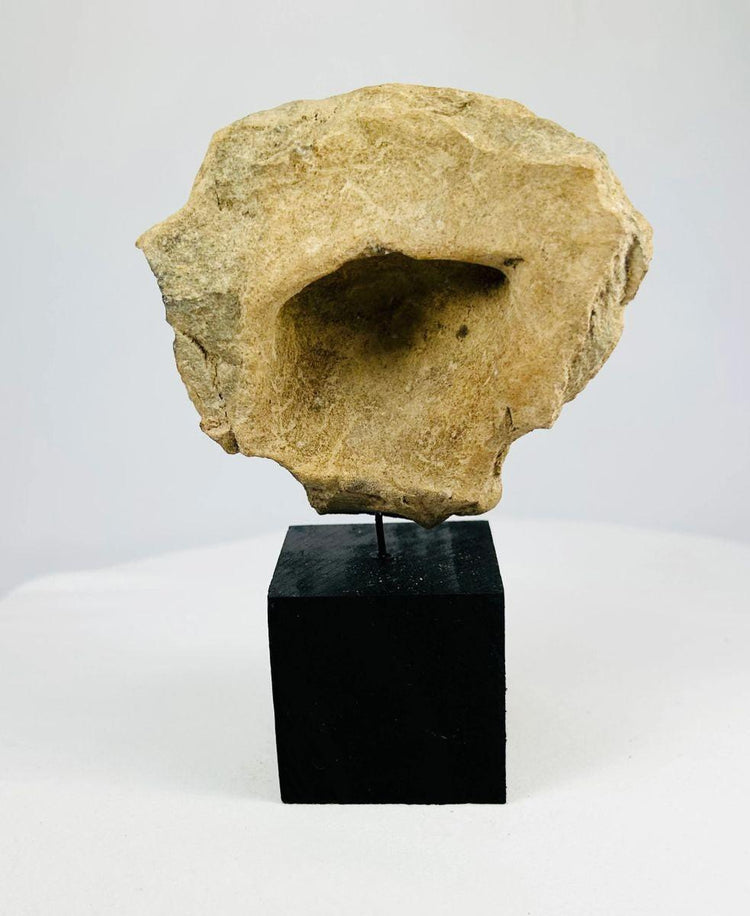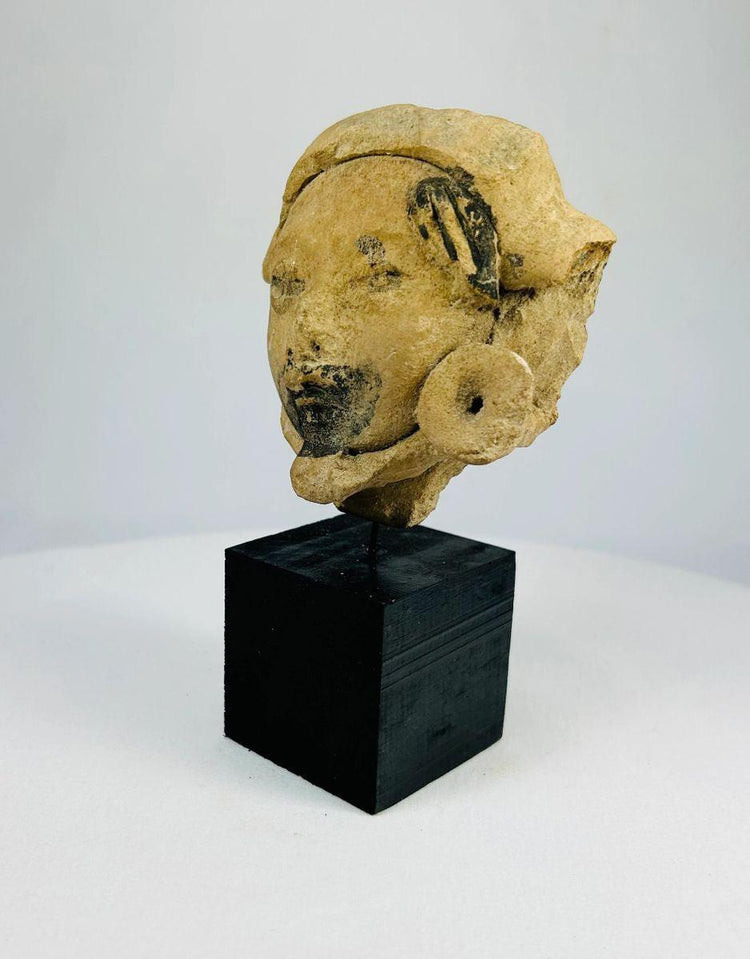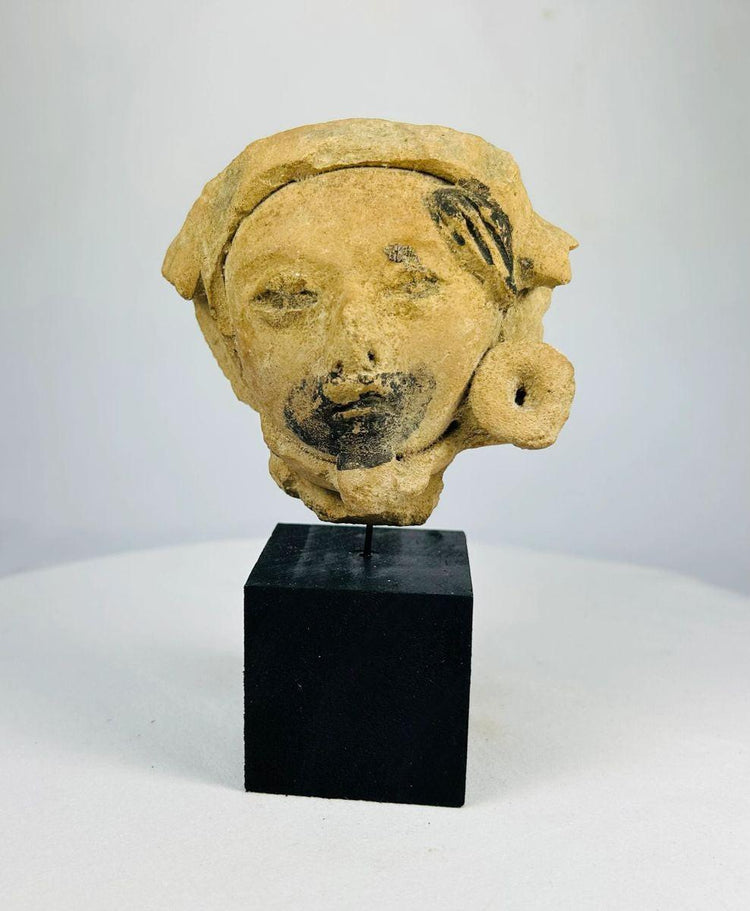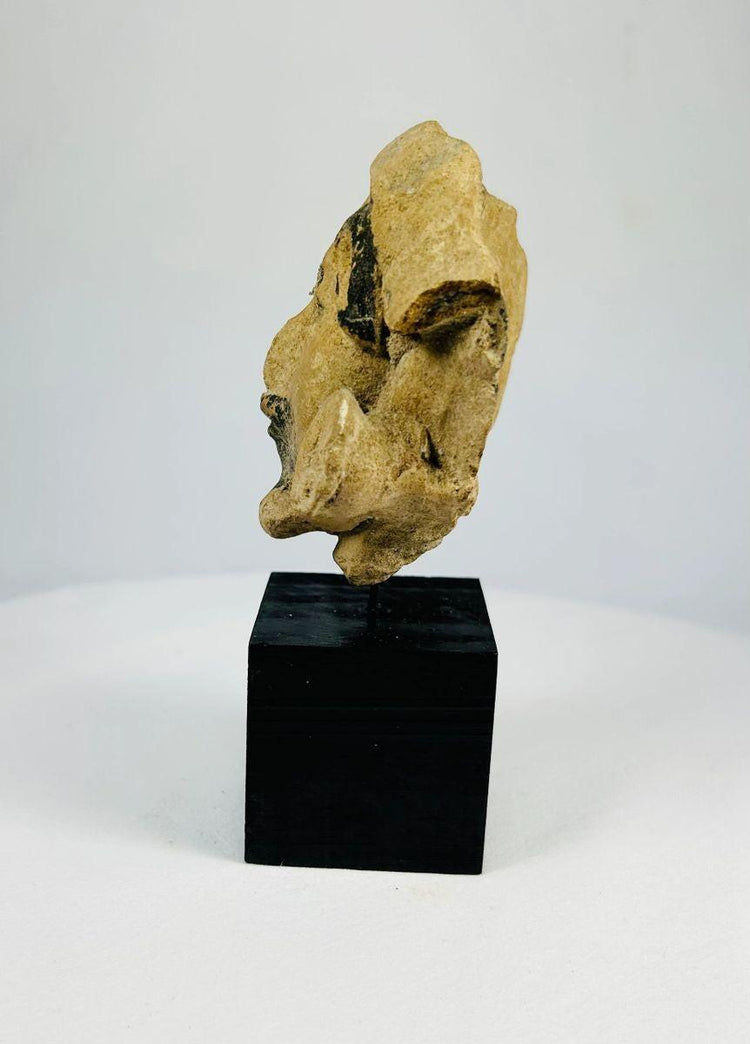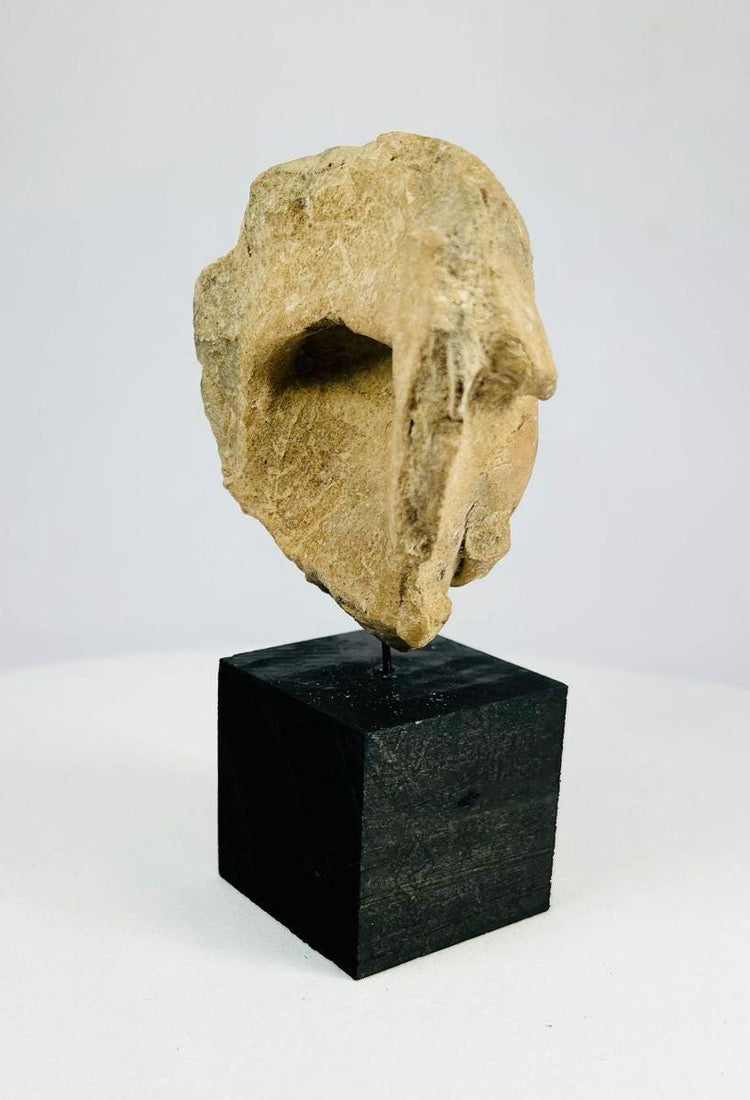Pre-Columbian | Mesoamerican | Larger Ceramic Head Fragment | Circa 500-900 AD
Description
More
Less
Historical Context & Origin
Region: Mesoamerica (likely Mexico or Guatemala)
Material: Ceramic with pigment traces
Period: Late Classic Period, circa 500–900 CE
Description
This remarkable ceramic head fragment reflects the artistic and ceremonial traditions of ancient Mesoamerican cultures. Likely originating from the Maya or Teotihuacan civilizations, it would have represented a figure of ritual or social significance—possibly a deity, priest, or elite individual. With expressive facial features, remnants of pigment, and a detailed headpiece, this piece embodies the symbolic and spiritual importance of figurative art in Pre-Columbian society.
Features
- Expressive face with well-defined eyes, nose, and lips
- Traces of black pigment across the face and headpiece, suggesting vibrant original decoration
- Turban-like headpiece or adornment, symbolizing ceremonial or high-status identity
- Circular protrusion on one side, indicating attachment to a larger structure or grouping
- Compact form yet richly detailed, exemplifying Pre-Columbian artistry
Cultural Significance
Ceramic figures played a central role in Mesoamerican religious and funerary traditions. This fragment, with its elaborate headpiece and expressive features, likely served in ritual ceremonies or temple offerings. Such works provided a spiritual connection to deities, ancestors, or leaders, embodying the sacred role of art in communal life. The pigment traces offer rare insight into the vivid coloration that once enlivened sacred spaces.
Condition
Although fragmentary, the piece retains significant detail, including facial features and pigment remnants. The surface shows natural patina and wear consistent with age, confirming its antiquity and enhancing its authenticity.
Dimensions (approximate)
Height: 6 in
Age
Circa 500–900 CE
Learn More
Explore the fascinating world of ancient Mesoamerican civilizations
Discover additional relics from Mesoamerica’s legendary civilizations
Description
Historical Context & Origin
Region: Mesoamerica (likely Mexico or Guatemala)
Material: Ceramic with pigment traces
Period: Late Classic Period, circa 500–900 CE
Description
This remarkable ceramic head fragment reflects the artistic and ceremonial traditions of ancient Mesoamerican cultures. Likely originating from the Maya or Teotihuacan civilizations, it would have represented a figure of ritual or social significance—possibly a deity, priest, or elite individual. With expressive facial features, remnants of pigment, and a detailed headpiece, this piece embodies the symbolic and spiritual importance of figurative art in Pre-Columbian society.
Features
- Expressive face with well-defined eyes, nose, and lips
- Traces of black pigment across the face and headpiece, suggesting vibrant original decoration
- Turban-like headpiece or adornment, symbolizing ceremonial or high-status identity
- Circular protrusion on one side, indicating attachment to a larger structure or grouping
- Compact form yet richly detailed, exemplifying Pre-Columbian artistry
Cultural Significance
Ceramic figures played a central role in Mesoamerican religious and funerary traditions. This fragment, with its elaborate headpiece and expressive features, likely served in ritual ceremonies or temple offerings. Such works provided a spiritual connection to deities, ancestors, or leaders, embodying the sacred role of art in communal life. The pigment traces offer rare insight into the vivid coloration that once enlivened sacred spaces.
Condition
Although fragmentary, the piece retains significant detail, including facial features and pigment remnants. The surface shows natural patina and wear consistent with age, confirming its antiquity and enhancing its authenticity.
Dimensions (approximate)
Height: 6 in
Age
Circa 500–900 CE
Learn More
Explore the fascinating world of ancient Mesoamerican civilizations
Discover additional relics from Mesoamerica’s legendary civilizations
You May Also Like
























